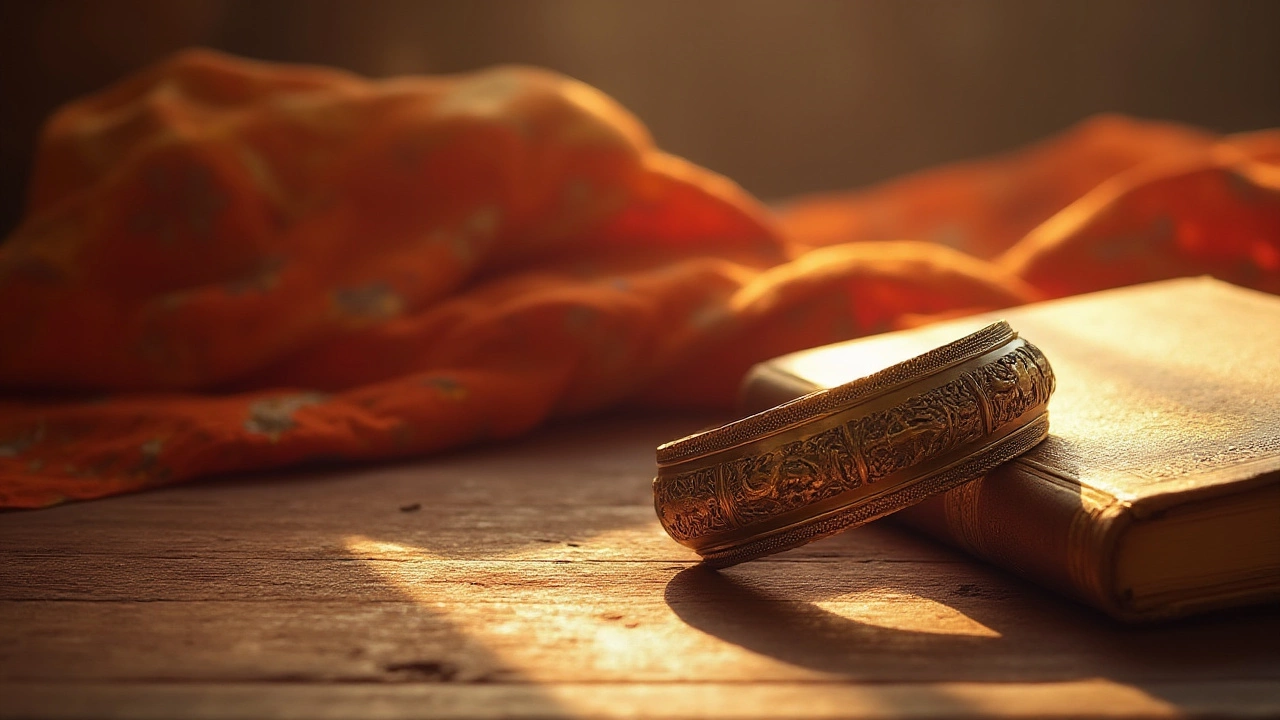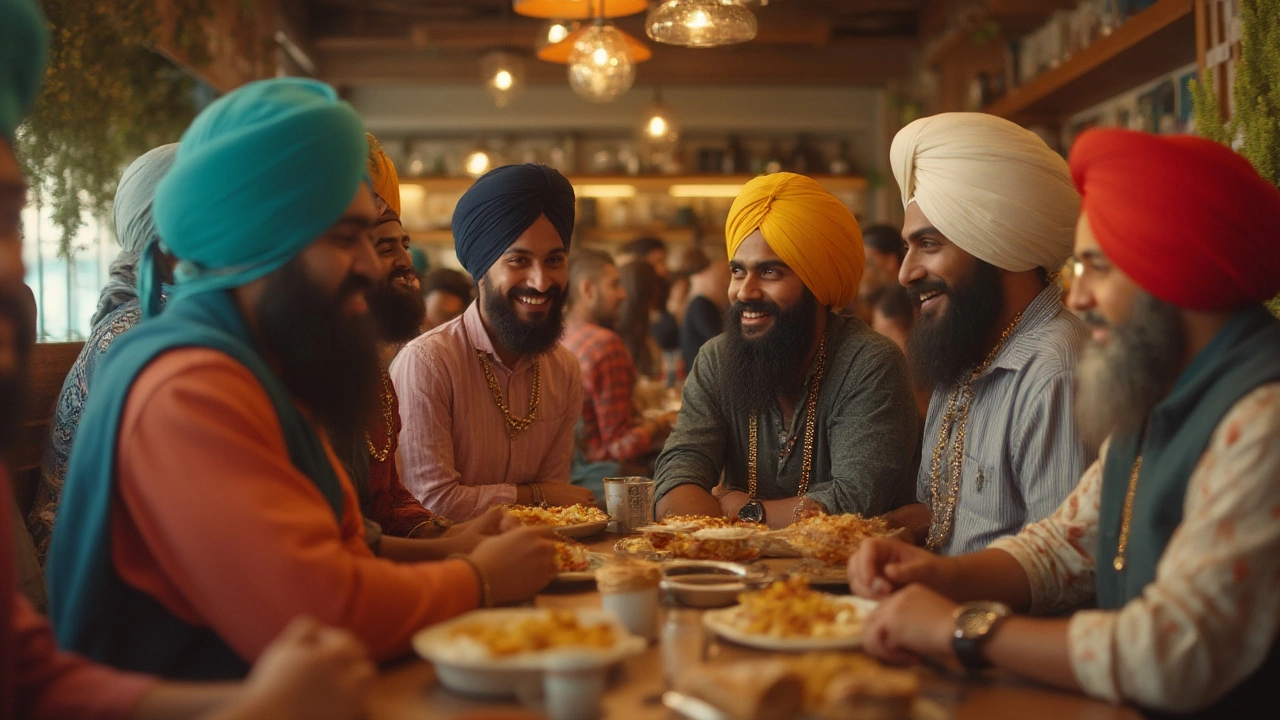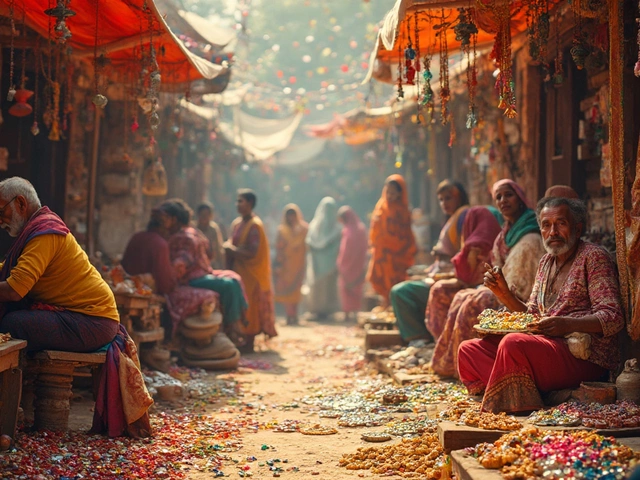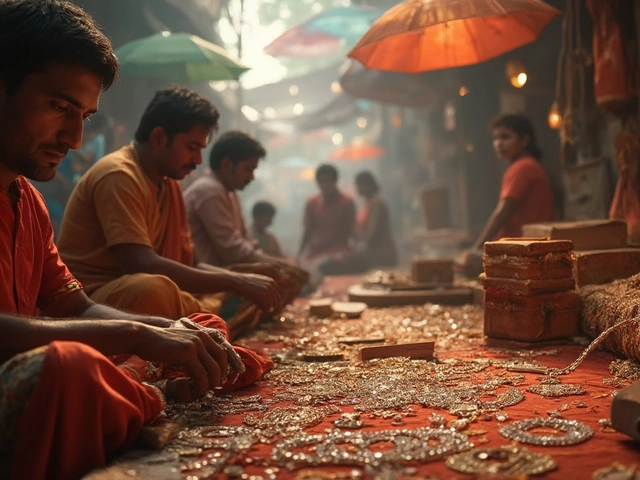
Walk down any street in North India or even in some London neighborhoods and you’ll spot it—the simple, unassuming steel bangle glinting on a wrist, sometimes paired with a smartwatch, sometimes hidden under a shirt cuff. The Kada isn’t flashy jewelry. To some, it looks like minimalism with a hint of defiance. Others see it only as cultural tradition. But what’s the real story behind the Kada? And if you’re not Punjabi or Sikh by birth, can you wear one at all?
What Is a Kada? Breaking Down the Origins and Meaning
The Kada doesn’t show up randomly in Indian history. It’s deeply tied to Sikhism, making its first formal appearance in the 17th century. Guru Gobind Singh, the tenth Sikh Guru, introduced the “Five Ks”—the five physical symbols worn by Sikhs to show their faith and commitment. The Kada, a circular steel or iron bracelet, is the third among them. You’ll hear Sikhs say it represents unity, eternity, and a constant reminder to do right.
Unlike a religious relic that stays hidden away, the Kada is right there on every Sikh’s arm, no matter their age or gender. In the original tradition, it is made from iron or steel, chosen for its strength and discipline, not just for looks. The round, seamless shape is supposed to remind you of the infinity of God. If you find yourself fiddling with a Kada while zoning out in class or a Zoom meeting, you’re reenacting what generations before you did, because it’s not supposed to come off easily.
Now, you might see gold or even bejeweled versions on Instagram, which raises eyebrows in some older circles. Tradition leans toward simple, unpolished metal. Ask any elderly Sikh about “blinged-out” Kadas, you’ll probably get a long lecture about humility and meaning. Even today, some strict Sikhs will only wear the steel version, seeing gold as too showy. Still, you can find Kadas in every kind of metal these days, popping up in markets from Delhi to New York.
So, Who Usually Wears the Kada? More Than Just Sikhs
If you think the Kada’s only for strict, turban-wearing Sikhs, think again. Head to Punjab, you’ll spot not just Sikhs, but Hindus and even some Muslims slipping on Kadas. It’s become a cultural thing—a coolness badge and often a marker of Punjabi identity, not only Sikh faith. Watch sports stars, Bollywood actors, or the average college student; you’ll see it peeking out in gym selfies and red carpet shots. My friend Gaurav, who isn’t Sikh, got his Kada from his Punjabi roommate as a symbol of friendship when they finished university, and he hasn’t taken it off since. For him, it’s become part of his daily wear, not a religious statement.
Even kids get Kadas at a young age. Parents buy tiny versions for their toddlers and hope the ring won’t fall off their chubby wrists. Sometimes, it’s seen as a good-luck charm—a sort of spiritual safeguard that bounces bad vibes away. In the 1970s, during the Sikh diaspora wave, the Kada went global, landing in the UK, Canada, the U.S., and Australia. Now, it shows up in yoga studios (even my neighbor who teaches hot yoga wears one!), streetwear brands, and festivals around the world, not just at Sikh temples.
So this little iron ring, once a clear marker of religious duty, has slid quietly into mainstream fashion. Walk through Soho or Sydney and Kadas are nearly as common as friendship bracelets or yoga beads. Does it mean the same for everyone? Of course not. For some, it’s faith. For others, it’s fashion or friendship. But this blend of meaning makes Kadas even more intriguing.

Can Non-Punjabis Wear a Kada? Culture, Respect, and Personal Choice
Here’s where conversations can get tricky. Is it actually okay for non-Punjabis or non-Sikhs to wear a Kada? The short answer: yes, but with some real-world caveats.
Sikhs don’t have a blanket warning against outsiders donning a Kada. Unlike certain sacred clothing you shouldn’t touch unless you’re part of the faith (think Japanese kesa or Jewish tallit), the Kada’s been openly gifted to non-Sikhs for decades. Visit Amritsar’s Golden Temple, and you’ll see non-Sikhs offered Kadas in the langar hall as a gesture of inclusion. Bollywood, sports, and even hip-hop culture have borrowed the humble Kada, and not many eyebrows were raised in response.
But, as with all things cultural, intent and respect matter. You wouldn’t rock a turban just because it looks cool—there’s a weight to it. The Kada’s symbolism deserves the same kind of thought. If you’re choosing one as a friend-gift or because you admire Punjabi culture, that’s seen as a gesture of appreciation. Wearing it as a random trend or as part of a costume? That’s where it gets murky.
I once had a neighbor, Max, who started wearing a Kada after his trip to Chandigarh. He asked a local Sikh friend about it first. His friend explained the basics: it's not forbidden, but know what it stands for. Max loved the symbolism of unity and strength. He decided to wear his Kada every day. The key takeaway: a little research and a respectful attitude go a long way.
You also want to keep context in mind. Religious ceremonies, gurdwara visits, or other sacred moments? Wearing a Kada is more likely to be seen as respectful. But if you team it up with a Halloween costume poking fun at Indian culture, that’s crossing a line. If you’re unsure, just ask—a Sikh friend will appreciate the question.
Kadas have even made their way into wellness trends. Plenty of non-Punjabis wear them for the supposed health benefits—iron touching the skin is sometimes believed to bring balance and energy. That belief isn’t part of Sikhism, but the broader Indian subcontinent sometimes connects metal jewelry with holistic health. The lines have blurred between meaning, wellness, and style.
Styling the Kada: Tips for Anyone Considering This Timeless Bangle
So you’ve decided you want a Kada, either for what it stands for or because you dig the look. Cool. Here’s where to start so you don’t end up with a clunky wrist or an accessory that just doesn’t vibe with your style.
Original Kadas are plain, thick, and heavy—they’re made for daily wear and sometimes even for taking a few knocks (ask any Sikh kid who’s tried arm wrestling). Most jewelers in Punjab still sell the heavy steel one, but lighter options are everywhere. Pick a size that’s snug but not tight. If your wrist is delicate, choose a sleeker, more slender one that won’t weigh you down or clink too much when you type. I learned that the hard way, trying to balance my coffee, Luna the cat, and my laptop—trust me, lightweight is better if you’re new to this.
If you want to nod to tradition, go with stainless steel or iron. Want something subtle for the office? Silvery or matte finishes blend in nicely with a button-up or blazer. Gold versions exist, but if you’re aiming for traditional respect, reserve those for special events—not daily errands. If you vibe with bling, there are even diamond-studded options, but honestly, the magic of the Kada is in its simplicity.
Stacking is a huge trend right now. You’ll see people pair their Kada with a wristwatch, fitness band, or even a collection of braided friendship bands from school. That’s fine—there’s no rule against mixing personal flair with tradition. Still, don’t pile on so many bands that the Kada loses its distinction.
- Tip 1: If your wrist sweats easily, go for stainless steel or coated iron–it won’t rust or give you a rash.
- Tip 2: Want to use a Kada as a meaningful gift? Tuck a short note about its origins and symbolism into the box—it’ll score you instant cool points and extra meaning.
- Tip 3: For those who are super active (hello, marathon runners and dog walkers), look for smooth-edged Kadas that won’t catch on clothes or leashes (Sparky approves this message).
- Tip 4: If you ever travel to Punjab or visit a gurdwara, take a moment to watch how people wear theirs. It’s simple, but there’s a palpable pride in every flick of the wrist.
- Tip 5: Remember, personal style always shows. Go classic, understated, or bold—your Kada is your story.
One final note: like any piece of jewelry with meaning, the best style is honesty. If someone asks you about your Kada, don’t fake a backstory. Just be real about why you chose it. The more sincere your answer, the more respect you’ll earn, both for yourself and the tradition this timeless bangle carries.


